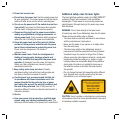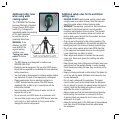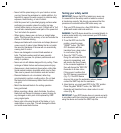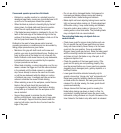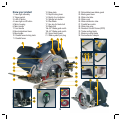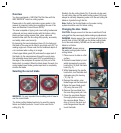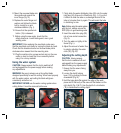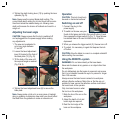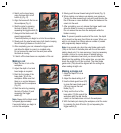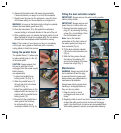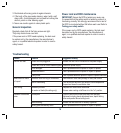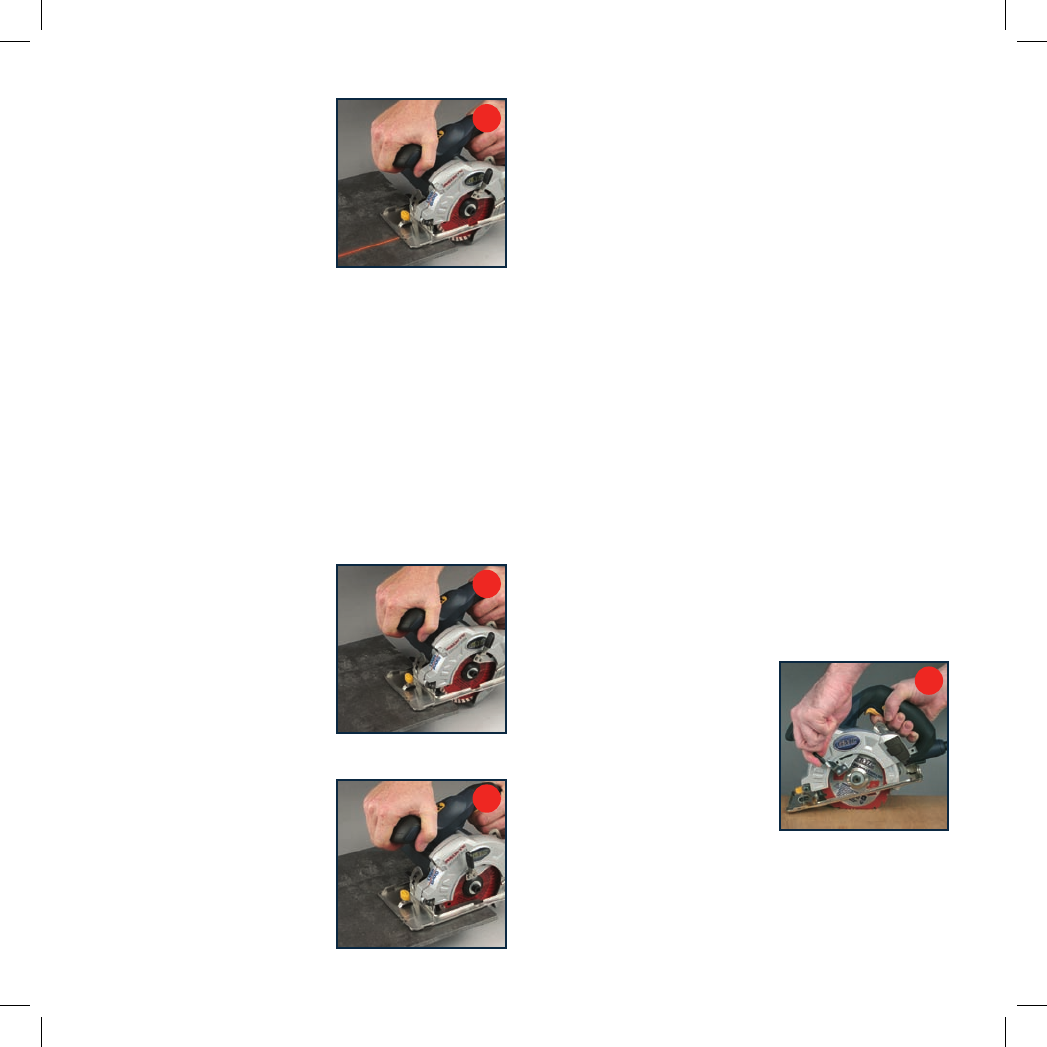
14
4. Switch on the laser beam
using the laser light on/off
button (4) (Fig. U).
5. Align the beam with the line on
the workpiece (Fig. V).
6. Start the motor by pressing
the lock off button (3) and
squeezing the trigger switch (2).
7. Always let the blade reach full
speed (approximately
2 seconds) before you begin to cut into the workpiece.
8. Slowly push the saw forward using both hands, keeping
the red laser light beam on the line of cut.
9. After completing your cut, release the trigger switch
and allow the blade to come to a complete stop.
Do not remove the saw from the work piece while
the blade is moving.
10. Switch off the laser beam on completion of the cut.
Making a cut
1. Mark the line of cut on the
workpiece.
2. Adjust the depth of cut and
bevel angle as required.
3. Rest the front edge of the
base plate (12) on the
workpiece. Make sure that
there is no contact between
the blade and the workpiece
(Fig. W).
4. Start the motor by pressing
the lock off button (3) and
squeezing the trigger
switch (2).
Note. Always let the blade reach
full speed (approximately
2 seconds) before you begin to
cut into the workpiece.
5. Slowly push the saw forward using both hands (Fig. X).
6. When making a cut always use steady, even pressure.
Forcing the saw causes rough cuts and could shorten the
life of the saw or cause kickback. Allow the blade and the
saw to do the work.
7. After completing your cut, release the trigger switch and
allow the blade to come to a complete stop.
Do not remove the saw from the workpiece while the
blade is moving.
Note. To prevent possible overload of the motor, the depth
of cut should not be more than 20mm at a pass. When you
wish to cut deeper than 20mm make a number of passes
with progressively deeper settings.
Note. As a general rule, align the outer blade guide notch
(19b) on the front of the base plate with the cut line when
making bevel cuts. For more accuracy, it may be necessary
to make a trial cut in a scrap piece of material along a
guideline to determine how much you should offset the
blade from the guideline. At the same time, you can also
check the angle of cut if this is critical. The outer blade
guide notch (19a) should be aligned with the cutting line
when making straight cuts.
Making a plunge cut
1. Adjust the depth of cut as
required.
2. Adjust the bevel setting to 0°.
3. Use the blade guard lever (23)
to raise the lower blade guard
(22) and expose the saw
blade (Fig. Y).
4. Firmly rest the front of the
base plate (12) flat against the
workpiece with the rear handle
raised, so the blade does not touch the workpiece.
5. With the blade just clearing the workpiece, start the motor
by pressing the lock off button (3) and squeezing the
trigger switch (2).
V
Y
w
X



